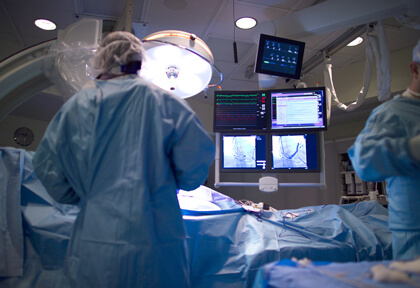Same-day discharge (SDD) has been shown to be effective in angioplasties and some peripheral procedures, but the pandemic—because of the burden it caused on the healthcare system—has forced the optimization of hospitalization times for other pathologies and procedures.

This strategy is yet to be tested in transcatheter aortic valve replacement (TAVR) due to the possible complications that may arise in the first 24 hours, particularly conduction disturbances.
SDD after TAVR could be used in select patients: those with prior permanent pacemaker, procedures conducted through transfemoral access, with conscious sedation, in the early morning hours, without post-procedure electrical conduction disorders, without vascular complications, with stable hemodynamics, who have been able to ambulate comfortably, and who have social support for discharge. However, this has not yet been demonstrated.
Multicenter study PROTECT TVAR included 2100 patients, of which 124 had SDD (5.9%).
The primary endpoint (PEP) was a composite of cardiovascular death, stroke, infarction, all-cause readmission, major vascular complication, and new permanent pacemaker implantation (PPMI).
Mean age was 79 years; most patients were men, one third of the patients had diabetes, 28% had impaired kidney function, 30% experienced atrial fibrillation, 8% had bicuspid lesions, 6% had Valve-in-Valve, 33% had prior PPMI or ICD, 8.8% experienced RBBB, 11.8% experienced LBBB, and 41% had second or third-degree AV block. The Society of Thoracic Surgeons (STS) score was 2.4%.
Ejection fraction was 58%, aortic valve area was 0.4 cm2, and mean aortic gradient was 42 mmHg.
Of all patients, 96.8% had balloon-expandable valves implanted, 100 underwent conscious sedation, and 24 received local anesthesia.
Read also: IVUS in Femoropopliteal PCI: Should We Start Using It?
The PEP was 5.7%; only one patient who had a self-expanding valve underwent a pacemaker implantation and was discharged the same day.
At 30 days, there were no cardiovascular deaths or new PPMIs, and only 5.7% of patients were readmitted due to heart failure. There was one non-cardiac death due to subarachnoid hemorrhage in a patient with atrial fibrillation receiving anticoagulation, three unrelated readmissions, and one patient readmitted for COVID-19.
Conclusion
SDD after TAVR is feasible and safe in certain patients at low risk for adverse events. Once the effects caused by the COVID-19 pandemic definitely subside, this strategy may apply to a large group of patients.

Dr. Carlos Fava.
Member of the Editorial Board, SOLACI.org
Original Title: Same-Day Discharge Post–Transcatheter Aortic Valve Replacement During the COVID-19 Pandemic The Multicenter PROTECT TAVR Study.
Reference: Madeleine Barker, et al. J Am Coll Cardiol Intv 2022;15:590–598.
Subscribe to our weekly newsletter
Get the latest scientific articles on interventional cardiology





